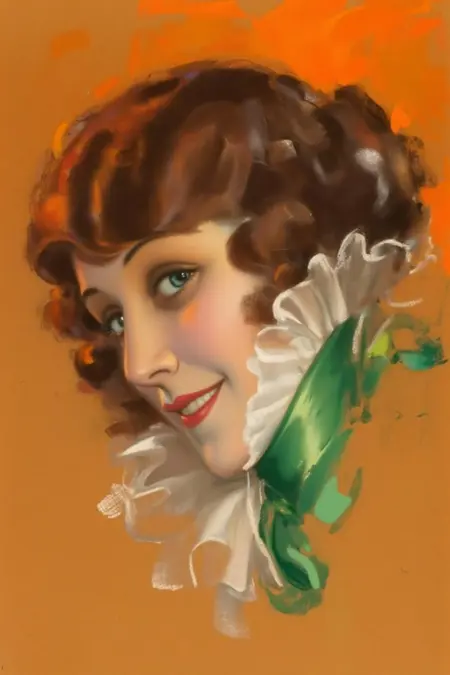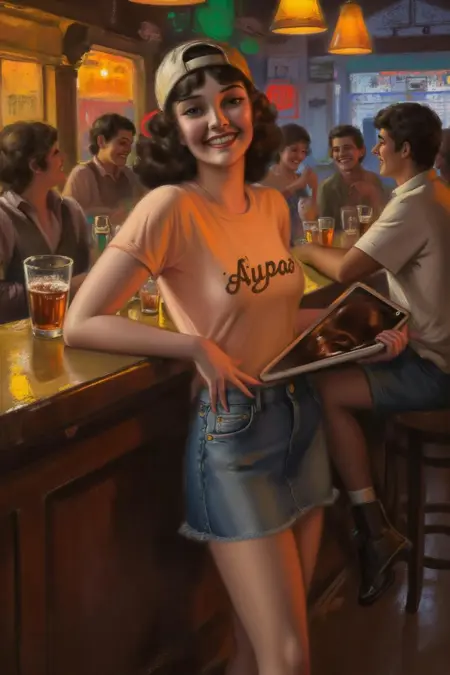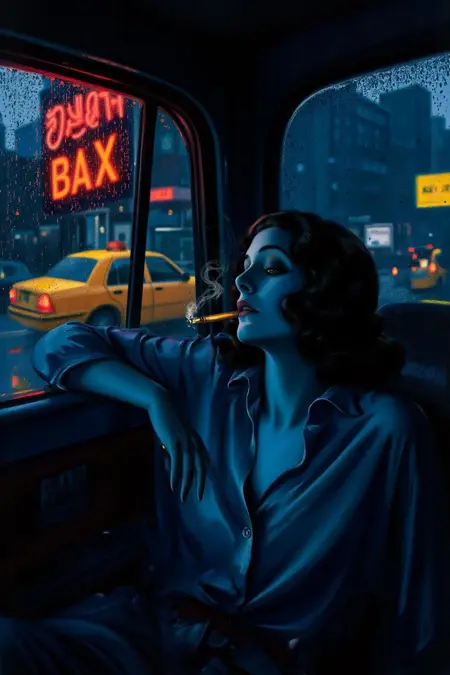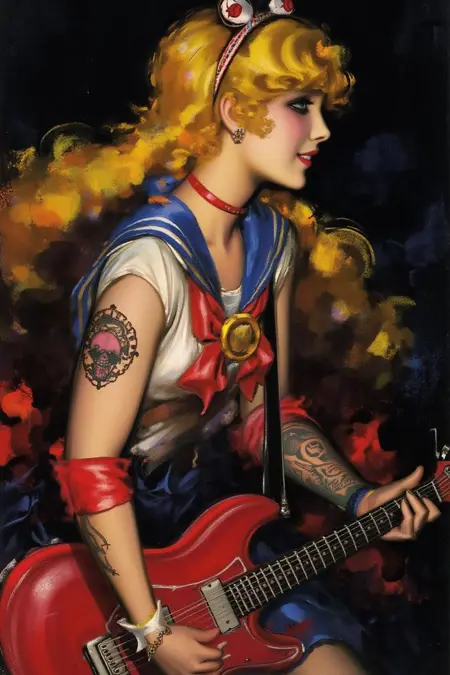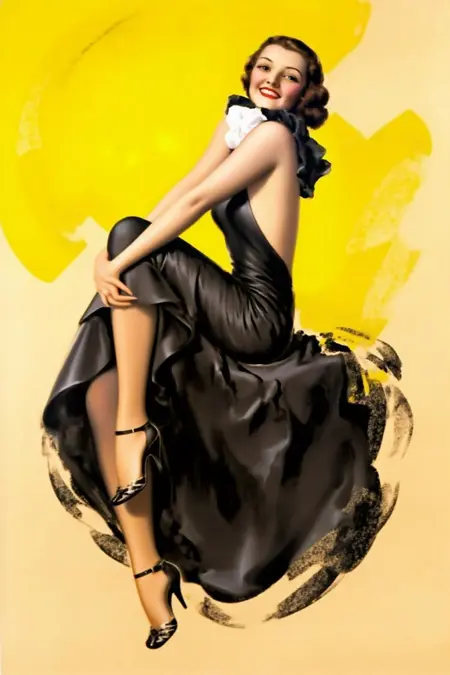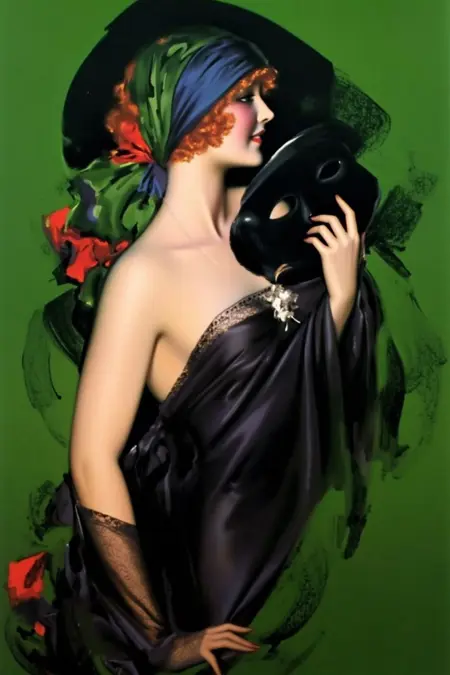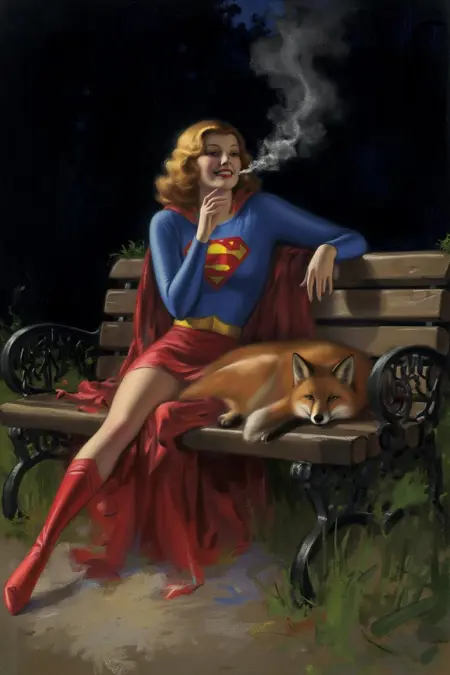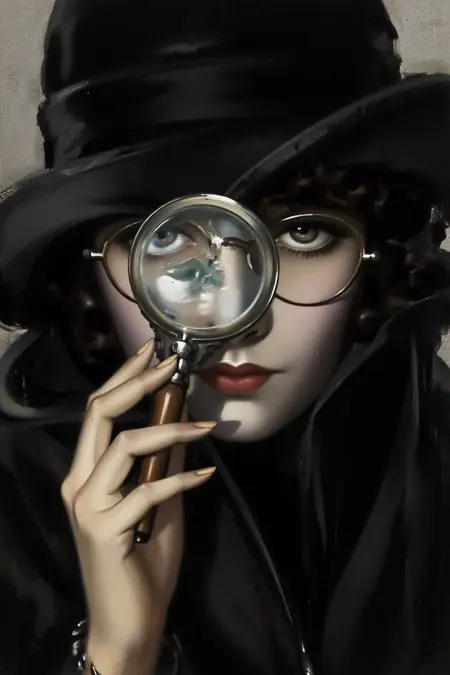Jazz Age Pin-Up Girls: Rolf Armstrong Calendar and Magazine Cover Illustration Style
세부 정보
파일 다운로드
이 버전에 대해
모델 설명
미국 화가 롤프 암스트롱(1889년 4월 21일 ~ 1960년 2월 22일)의 일러스트 45점으로 학습되었습니다. 그는 여성 주제를 화려하게 묘사하는 상업화가로 유명했으며, 잡지 표지와 달력 일러스트로 가장 잘 알려져 있습니다. 1960년 뉴욕타임스는 그를 “달력 소녀의 창시자”라 불렀습니다.[5] 그의 상업적 경력은 1912년부터 1960년까지 이어졌으며, 그의 원작의 대부분은 파스텔로 제작되었습니다. 그의 작품을 보려면 다음 링크를 방문하세요:
ChatGPT에서:
롤프 암스트롱(1889년 4월 21일 ~ 1960년 2월 22일)은 20세기 초 미국에서 가장 유명한 일러스트레이터 중 한 명으로, 화려한 파스텔 여성 초상화 — 즉, 재즈 시대와 일러스트레이션의 황금기 동안 달력, 잡지 표지, 광고에 수록된 아이코닉한 핀업 소녀 로 유명합니다.
🎨 롤프 암스트롱은 누구인가?
미시간 주 베이 시티에서 태어난 암스트롱은 시카고 예술 학원에서 공부한 뒤, 파리의 아카데미 주lian에서 더 공부했습니다. 미국으로 돌아온 그는 대중 시장의 인쇄 매체가 급성장하던 시기에 상업 일러스트레이터로 일을 시작했습니다. 이상화된 미의 이미지에 대한 수요가 커지던 시기였습니다.
1920년대와 1930년대에는 암스트롱이 상업 일러스트레이션 분야의 선두 주자로 떠올랐고, 그의 파스텔 초상화는 브라운 앤 빅로우(Brown & Bigelow) 같은 기업에서 제작하는 달력에 널리 사용되었습니다. 그는 이 장르와 너무 밀접하게 연결되어 있어 종종 “미국 핀업의 아버지”로 불렸습니다.
💋 암스트롱의 스타일
매체: 암스트롱은 주로 파스텔을 사용했고, 이는 완벽한 피부의 빛과 반짝이는 입술의 명랑함을 포착하기에 완벽한 부드럽고 빛나는 질감을 제공했습니다.
주제: 거의 모든 작품이 여성이며, 종종 미소 짓고, 유혹적이며 자신감 넘치는 자세로 묘사되었지만, 현대 기준에서는 과도하게 성적화되지 않았습니다.
특징: 그는 큰 눈, 도자기 같은 피부, 조각된 광대뼈로 여성미를 이상화했으며, 이 스타일은 나중에 할리우드 그라마의 사진에서부터 현대 미용 광고에 이르기까지 모든 것을 영향을 미쳤습니다.
패레트: 밝지만 정제된 색채 사용으로, 그의 인물은 화려하고 마치 영화 같은 매력을 냈습니다.
💄 영향과 유산
핀업 문화의 선구자: 1940년대와 1950년대에 길 엘브그렌과 알베르토 바argas와 같은 예술가들이 더 성적화된 핀업을 인기 있게 만들었지만, 암스트롱의 여성들은 우아하고 절제되며 세련된 모습으로, 이 장르의 기반을 마련했습니다.
상업적 성공: 그의 이미지는 수많은 잡지, 달력, 악보, 제품 광고에 나타났으며, 한 세대에 걸쳐 미와 여성성에 대한 인식을 형성했습니다.
대중 문화: 그의 작품은 1900년대 초 아르 누보의 우아함과 20세기 중반 미국의 화려한 상업주의 사이의 다리 역할을 했습니다.
🖼 주요 모델 및 주제
그는 종종 전문 모델들과 협업했는데, 1940년대에 그의 가장 자주 등장하는 무즈 중 하나가 되었던 주얼 플라워즈가 그 대표적 사례입니다.
일반적으로 유명인 중심은 아니었지만, 암스트롱의 이상화된 이미지는 많은 여성이 대중에게 알려지기 전부터 스타렛의 이미지를 형성하는 데 기여했습니다.

